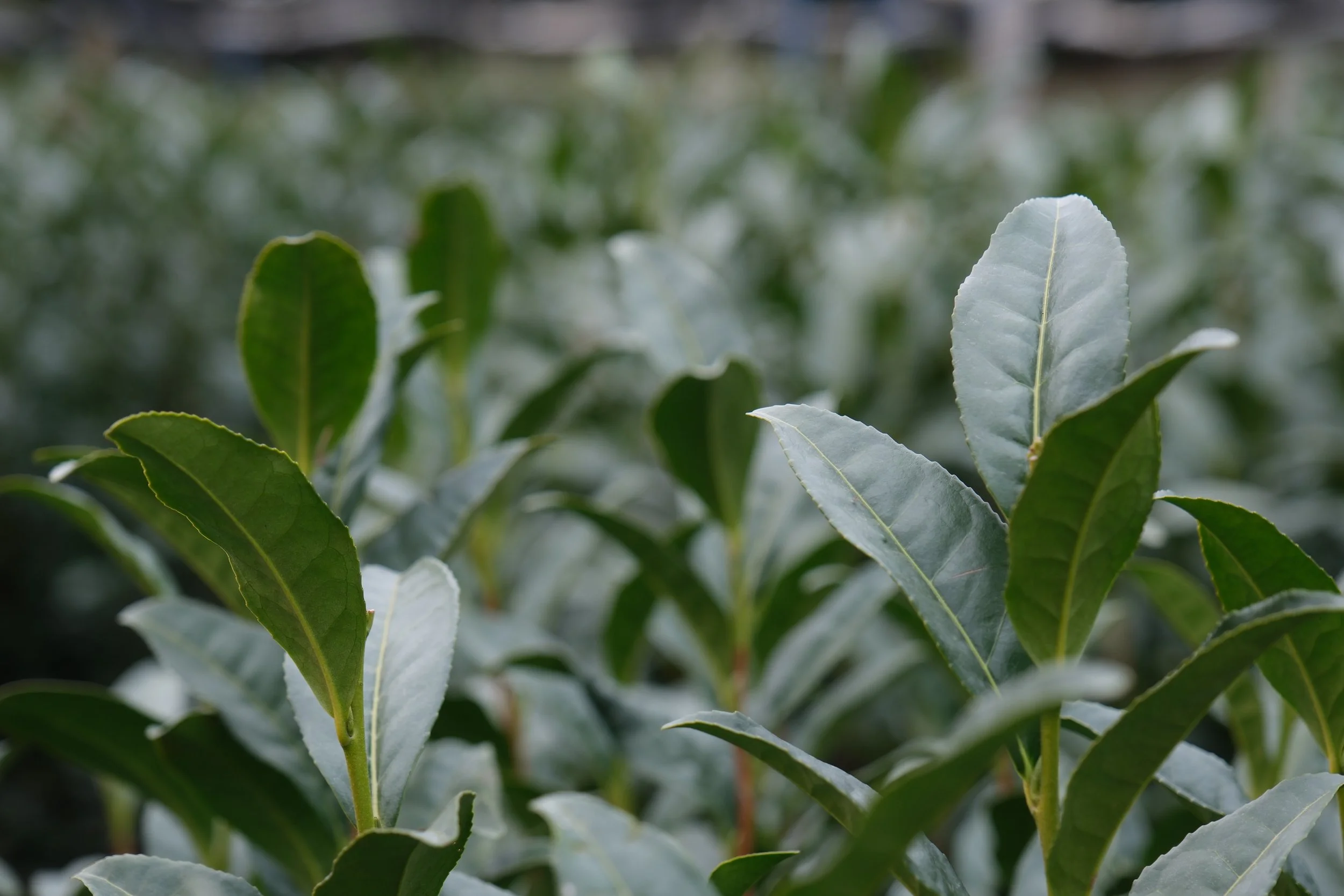Sencha - Soufuu
Steamed Tea Background Information:
Steamed teas like sencha are one of the most traditional types of Japanese green tea. There are three main types of sencha; asamushi (light steamed, ~15seconds), chuumushi (medium steamed, ~15-45seconds), fukamushi (deep steamed, ~45+seconds). Lighter steamed teas tend to produce a golden yellow colour. Deep steamed teas however can produce vivid green colours usually with a thicker texture, and due to the longer steaming time the leaves are mostly broken and fragmented with many small particles, meaning we consume more nutrients (and caffeine!). Asamushi sencha leaves are mostly intact, rolled into needle shapes which unfold more attractively as infusions progress. Shincha (meaning new tea) is tea that has been picked during the first harvest of the year – in spring. Later harvests have drastically lower amounts of amino acids (which give us umami and sweetness) and higher catechin levels (astringency and some bitterness). After harvest the tea is steamed straight away to halt oxidisation, and will then go on to be dried and rolled through various processes, finally being fired (hiire) to further dry the leaves to under 5% moisture, and impart the final taste. Some Japanese green teas are made from blends of different cultivars or regions, and some are single cultivar (similar to coffee/whisky). Blends are created by tea masters who taste many teas and then choose a selection to combine for a desired final taste that is easier to replicate year after year by adjusting the cultivar ratios. Single cultivar teas show the drinker how that year’s particular harvest was for that cultivar, as easy year can be quite different. This allows the drinker to build up a mental profile of that cultivar’s characteristics with time, bearing in mind there will also be large influences from the region/terroir and the specific farmer and producer’s growing and finishing methods.
Notes For This Particular Tea:
This tea is a single cultivar Soufuu grown and produced in Hoshinomura, Yame, Fukuoka. The Soufuu cultivar is a cross between Yabukita (the main japanese green tea cultivar, around 70% of total production) and Shizu Inzatsu 131 (of Indian origin), and registered in 2002. It is known to have a jasmine aroma!
Sencha is a delicate tea and is sensitive to hot water temperatures. Because of this, we usually recommend cooling the water for the first two infusions to enjoy the umami flavour. In this case we find slightly higher temperatures are beneficial for the Soufuu cultivar, or at least this specific one, so we start a little higher than we usually would for a Yame sencha.
Please experiment to find your personal brewing preference. A good starting point is listed below:
Hot brewing guide:
Sencha 4 grams
Water 100ml
First infusion 75°C for 60sec
Second infusion 85°C for 20sec
Third infusion 85°C for 0sec
Cold brewing guide:
Sencha 10 grams
Water 800ml for 6-12 hours
Spring or filtered water is recommended (specifically we look for a TDS of 30-80 - if you’re in the north of england tap water should be fine, and if you’re in the south you are probably familiar with water filters already). Simply pour the tea leaves on water and keep in the fridge overnight, or for 6-12 hours. Avoid vigorous handling/shaking. We use an ice and water mixture so that the brewing temperature is around 6 degrees celcius from start to finish, but forgoing the ice is absolutely okay. The duration of the brew can be experimented with to find your personal preference and when you are happy with the flavour, strain and dispose of the leaves. Consume within 24 hours.
Storage:
Store in a cold environment (6-10°C) and avoid exposure to light, air, heat, moisture and strong smells - these will degrade your tea. Best consumed within 1-2 months from when it is first opened.


